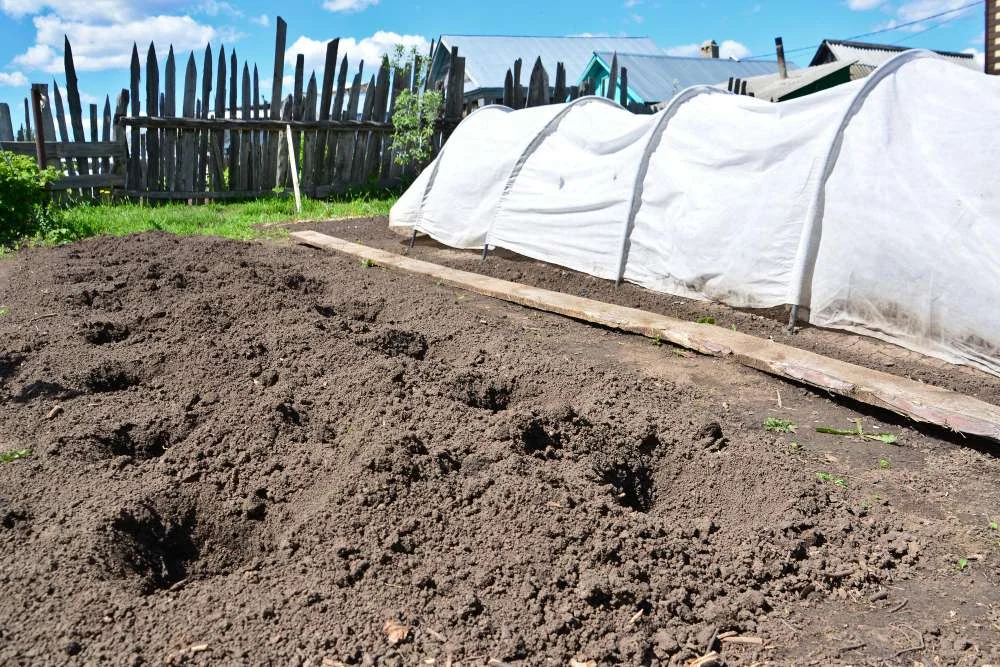All you need to do is tweak your garden soil with soil amendments, and you will have a colorful oasis flourishing! If you would like a few tips on transforming the beauty of your flower bed or landscaping, read on- it all begins with improving and enriching your soil.
So, what are the soil amendment for flower beds and landscaping? Before you do anything, test your soil to see what it has or needs. Mix organic ingredients like compost or aged manure into the soil for structure and nutrients. Add sand for better drainage. Apply lime to increase pH, and apply sulfur to decrease pH.
Nevertheless, knowing these soil amendments in detail is critical to achieving beautiful flower beds and landscaping. I will go through everything about soil amendments from my years of experience. Let’s start.
Getting to Know The Basics: What Soil Is And Why Does It Matter?
Before further discussing soil amendment, it is essential to understand what soil is and elaborate on its importance. A combination of minerals, organic matter, and air in pores makes up gardening soil. Furthermore, this is where every plant takes root to grow and develop effectively.
Additionally, the nutrients in the soil help provide the required nutrients for their growth and water. Thus serving as a strong foundation for plants.
Hence, many categories of soil exist, and it is essential to note that each one has particular qualities that make it suitable for agriculture.
There are three types of soil that you should know about;
- Clay Soil
- Sand
- Loam Soil
Clay is heavy and holds water poorly, while sand is unsuitable for plants owing to its rapid drainage and inability to retain nutrients.
Alternatively, loam contains a sufficient sand, silt, and clay mixture. It is suitable for many plants because it allows water to pass through and, at the same time, retains water.
Why Soil Amendment is Necessary
It is crucial to recognize that no soil is perfect. Thus, most of us have to work with what we have, which is not the best soil type. As a result, soil amendment provides the soil with organic and inorganic materials to make the best of what we have. The purpose of soil amendments is as follows;
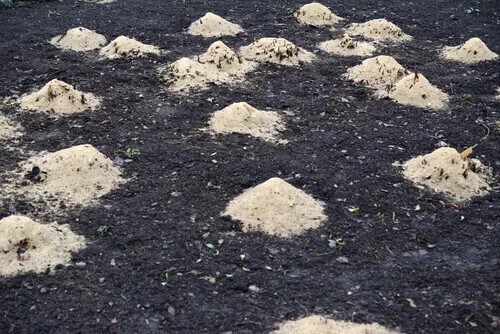
- Improving the structure of the soil: Making heavy clay ones more friable and sandy ones more able to retain water.
- Enhancing Nutrient Content: Adding the essential nutrients plants need to grow well.
- Boosting Organic Matter: Enhance the soil’s moisture and nutrient-retention capacity.
- pH Levels Adjustment: Examine your soil and incorporate relevant soil amendments to achieve an ideal pH level for plants.
Choosing the Right Amendments For Soil
Depending on the particular needs of your soil, you would need to choose a specific type of soil amendment, and here are some commonly used soil amendments and their benefits:
Organic Amendments
First, let’s take a look at the organic amendments that you can make for flower beds and landscaping.
Compost
- Benefits: It improves soil structure, adds many essential nutrients, and also promotes the activity of beneficial soil microbes.
- Usage: You can spread around 2-3 inches of compost on the soil’s surface and till it in. Compost is excellent for any soil type and works great as a soil amendment.
Manure
- Benefits: Manure is rich in nutrients necessary for growing plants and helps maintain and enhance soil fertility.
- Usage: If you use well-aged manure, you can work it into the soil at least a few weeks before planting.
Peat moss
- Benefits: It boosts soil aeration and is a good source of moisture.
- Usage: Use this amendment, particularly for sandy soils, and mix it well with the soil.
Leaf mold
- Benefits: Adds to the organic matter within soil, improves soil structure, and also enhances water retention by soil.
- Usage: Be sure to incorporate it into the soil as you prepare it for the fall and then allow it to break down over the winter.
Inorganic Amendments
Now, let’s check out the inorganic amendments.
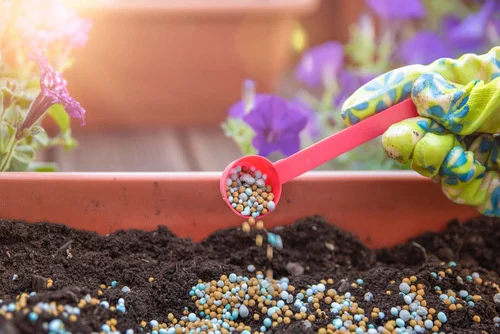
Perlite
- Benefits: Improves soil aeration and helps drain soils well.
- Usage: Mix it with any soil type to loosen heavy soils or improve potting mixes to drain.
Vermiculite
- Benefits: Retains moisture and other essential nutrients and aids soil aeration.
- Usage: Use it with soil for starting seeds or mix with soil to hold moisture.
Lime
- Benefits: Raises the pH level and overcomes excessive soil acidity. Furthermore, adds calcium and magnesium to the soil.
- Usage: Apply as per the soil test results and refrain from using too much lime, as too much of it can cause harm to plants.
Sulfur
- Benefits: Lower soil alkalinity.
- Usage: Use it according to the specific recommendations of the results of a test done on the soil. Too much sulfur can also be harmful to growing plants.
Test Your Soil Before Any Amendment

Before adding amendments to your soil, you must know how it is now. Furthermore, if you conduct a soil test, you will have full details about your soil’s PH level of nutrients and amount of organic matter.
Nevertheless, you can obtain soil testing kits from any garden center or take your soil sample to a local cooperative extension office.
After the soil test, you can determine the correct types of additives required in your soil and their quantity. For example, you should consider adding compost or manure if your soil lacks nitrogen.
Amending Soil for Flower Beds
Flower beds require rich and well-drained soil to support the flowers’ bright blooms and growth. Nonetheless, here’s a guide on how to do it from start to finish:
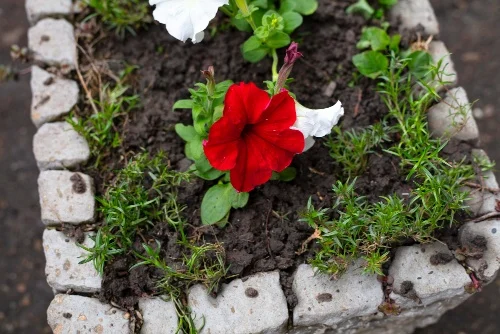
- Step 1: Start by clearing out the area for a flower bed. Remove all weeds, stones, or other debris forms within reach.
- Step 2: Loosen your soil with a garden fork 12-18 inches deep for aeration purposes, making blending in amendments easy (don’t mix them yet).
- Step 3: Introduce the organic matter to your ground by putting a thin layer of compost( two or three inches) or old manure onto the loosened dirt for nutrient addition and soil structure enhancement.
- Step 4: Next, incorporate the amendments thoroughly by turning it over with your tiller or garden fork.
- Step 5: Add lime to the soil if your soil test shows a low PH level, and sulfur should be added to a lower PH level. Follow the recommended amount of application.
- Step 6: After planting, add a layer of mulch to keep the moisture well and ward off weeds in the flower bed.
Amending Soil for Landscaping
Landscaping will usually include larger areas and plants that require different soil types. As a piece of advice, here are some tips on how to amend your soil while landscaping:
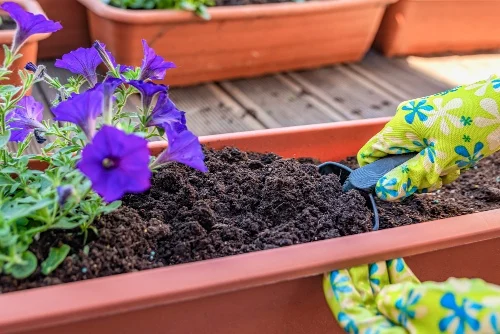
- Plan Ahead: Think about the plants you will use and their needs. Group them according to their soil requirements.
- Amend Soil in Sections: If a large area is to be amended, do the area in sections, only some at a time. This ensures that the amendments are correctly mixed in the soil.
- Use a Rototiller: It is handy for this step, as it can easily incorporate amendments more significantly.
- Organic Matter: Adding organic ingredients such as compost, peat moss, and animal manure suits most landscape plants and improves soil health.
- Test and Adjust: Regular soil testing and adjustment are crucial for maintaining optimal soil conditions.
Wrap Up
In conclusion, soil amendment is an ongoing process that ensures healthier, vibrant plants and better-looking gardens. Knowing your soil, its characteristics, and the proper amendments will make your flowers and landscape beautiful.
However, let us not forget that gardening is all about the soil, and you need to ‘feed it and take care of it; it will surely take care of the rest. Happy planting!

